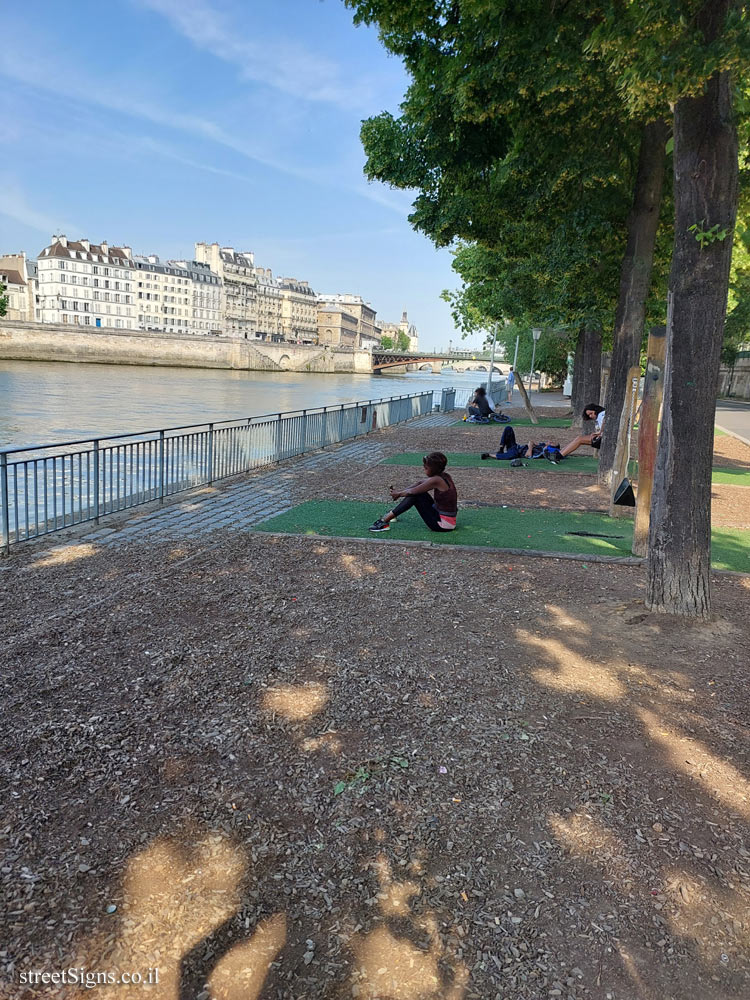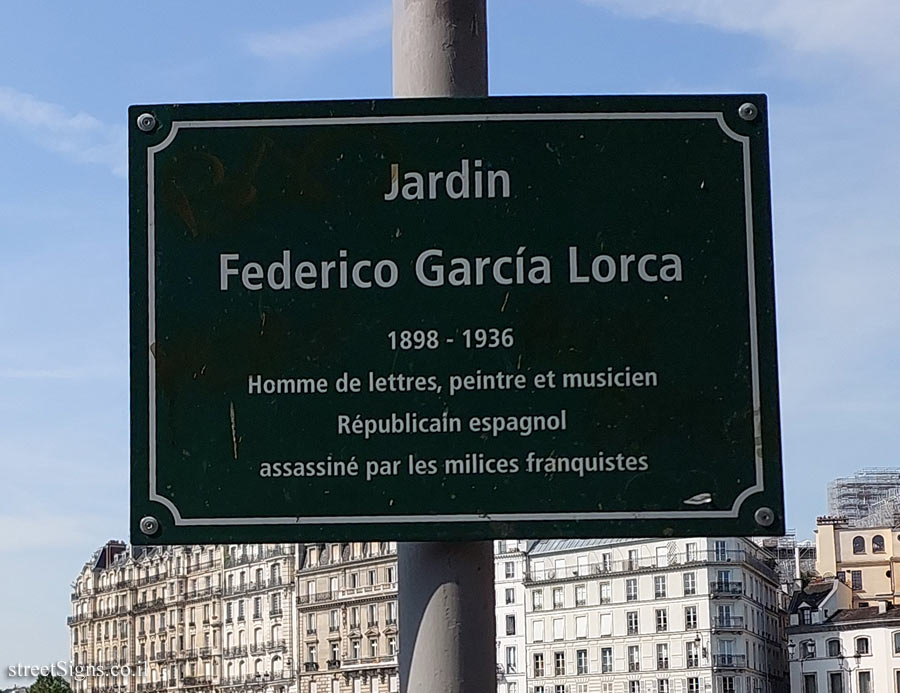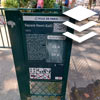Sign in a series of signs placed by the municipality of Paris describing the history of the city’s gardens.
The garden on the banks of the Seine is dedicated to the well-known Spanish poet Federico García Lorca, who is considered one of Spain’s greatest artists. Lorca was murdered in the Spanish Civil War because of his socialist views and being a homosexual.
The garden was photographed on the same day
 Click for a larger image
Click for a larger image The garden is also indicated on another sign
 Click for sign's details Translation of the text on the sign
Click for sign's details Translation of the text on the sign:
CITY OF PARIS
Federico García Lorca Square 1933
Federico García Lorca, born in 1898 in Fuente Vaqueros, near Granada, is a man of letters, painter and musician. Very young, he became involved with the artistic avant-gardes of Madrid. His poetic collection Romancero Gitano, published in 1928 exalted sensuality and the desire for freedom, both in the literary form and in the political sense. Between 1931 and 1936, under the Republic, he directed the troupe La Barraca, which played in the rural provinces. During this period, he wrote his dramatic trilogy Noces de sang, Yerma and La maison de Bernarda Alba.
When the Spanish Civil War broke out, he was threatened because of his republican convictions and his homosexuality. Arrested by Franco’s troops on August 19, 1936, he was assassinated on the side of a road near Víznar (Andalusia).
This garden, redesigned in 2017, pays homage to him. Offering a view of the islands, it is part of the vast ensemble of the Rives de Seine park, part of the
OPENING
[Opening hours]
Find all the practical information for your city on
paris.fr EcoJardin mark

 Click for a larger image
Click for a larger image  Click for sign's details
Click for sign's details  Click for all signs belonging to Gardens in Paris
Click for all signs belonging to Gardens in Paris
 294 Meter |
294 Meter |  386 Meter |
386 Meter |  390 Meter |
390 Meter |  477 Meter |
477 Meter |  517 Meter
517 Meter